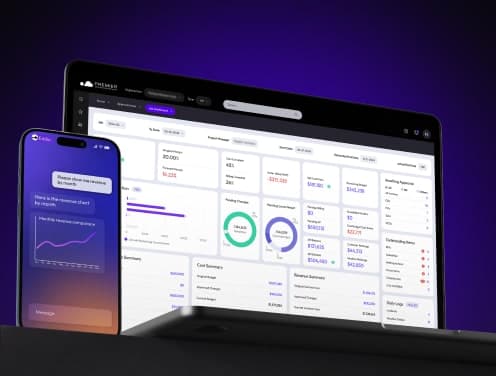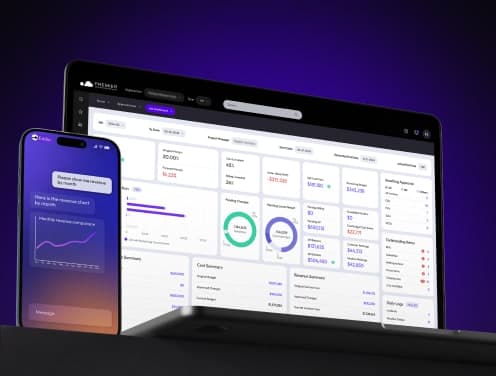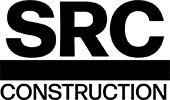
How to Build a Construction Risk Management Plan: Expert Guide
Construction is a high-risk industry with one of the highest rates of business failure among all economic sectors. The numbers tell a shocking story: 75% of projects exceed their original budget by a significant margin, and only 2.5% of companies complete their projects successfully.
When examining risk management in construction projects, the challenge becomes clear. Only 25% of projects stay within 10% of their original budget, making effective risk management in the construction industry a critical business function. From natural disasters ranking as the second most common cause of insurance claims to the sobering fact that nearly 1 in 5 workplace fatalities happens in construction, the need for robust risk management for construction companies has never been more urgent. Unfortunately, many businesses lack the historical data needed to make accurate risk assessments.
In this guide, we'll walk through the essential steps to build a comprehensive construction risk management plan that helps identify threats before they derail your projects. We'll share practical strategies to protect your bottom line, your people, and your reputation.
Identify potential risks early
Successful construction projects don't just happen—they're built on solid risk management foundations. The best project managers identify risks early in the planning process, long before breaking ground. In fact, developing and executing a risk assessment early reduces the chaos of dealing with unexpected threats during construction.
Common risk categories in construction projects
Construction projects face unique challenges, many of which fall into predictable categories. A comprehensive risk identification process starts with understanding these common threats:
Financial risks manifest as cost overruns, budget mismanagement, and unexpected expenses. These risks can severely impact profitability and may lead to project failure.
Schedule risks include delays from poor project management, permitting issues, and unforeseen circumstances. These delays affect everyone on the job and can quickly cascade into financial problems.
Quality and documentation risks often arise from errors in drawings, specifications, and contract documents. According to the Arcadis 2022 Global Construction Disputes Report, the second-highest cause of disputes globally was errors and omissions in contract documents.
Operational risks stem from inefficiencies, scheduling conflicts, and poor team coordination. Digital tools, such as Building Information Modelling (BIM), can help identify these risks before they occur.
Safety risks remain a serious concern, as construction consistently ranks among the most dangerous industries. Falls, caught-in or between accidents, struck-by incidents, and electrocution are OSHA's "Focus Four" hazards.
Additional categories include subcontractor default, supply chain disruptions, labour shortages, changing regulations, and environmental factors like extreme weather events.
How to gather input from stakeholders
Stakeholder involvement is crucial for thorough risk identification and assessment. Effective risk management depends on the consensus and collaboration of all participants.
First, identify all relevant stakeholders who may be affected by project risks. This typically includes:
- Project team members (architects, engineers, contractors)
- Clients and end users
- Suppliers and subcontractors
Next, assess each stakeholder's needs, expectations, and concerns. This helps prioritize which stakeholders to involve more deeply in the risk identification process.
Hold brainstorming sessions with the project team and stakeholders to identify as many possible scenarios that could negatively impact the project. At this stage, you're not solving problems—you're creating a comprehensive list of potential threats.
Remember that stakeholders in different project phases have varying perspectives on risk. For example, designers might see risks differently from contractors. This diversity of viewpoints is valuable, as it provides a more complete picture of potential problems.
Finally, empower stakeholders to take ownership of risks by providing them with the necessary training, resources, and tools. When everyone feels responsible for risk management, the process becomes more effective.
Using past project data to spot patterns
Historical data is a goldmine for risk identification. By analyzing past projects, you can detect patterns that might repeat in your current work.
Review similar past projects with comparable size, scope, and location. Look for recurring issues and how they were addressed. What risks materialized? Which mitigation strategies worked or failed?
Additionally, lessons learned from previous projects can help you avoid repeating mistakes. These insights might come from:
- Project reports and documentation
- Post-project reviews
- Insurance claims data
- Safety incident reports
Modern technologies are making this process more sophisticated. Predictive analytics leverages historical data to forecast potential risks by examining factors such as project size, location, and complexity. For instance, if you know where you failed previously, you can implement proactive measures to reduce the likelihood of similar issues.
Some construction companies are even using AI algorithms to identify patterns from past projects, such as weather-related delays, site conditions, or material shortages that could impact future work.
Remember that risk identification should be an ongoing process. Hold regular meetings throughout the project lifecycle to review current risk management efforts and identify new issues that might arise.
By identifying risks early through these systematic approaches, you'll be better positioned to develop effective mitigation strategies and deliver successful projects.
Prioritize risks based on impact and likelihood
"The essence of risk management lies in maximizing the areas where we have some control over the outcome while minimizing the areas where we have absolutely no control over the outcome." — Peter L. Bernstein, Economist and author of 'Against the Gods: The Remarkable Story of Risk'
After identifying potential risks, the next crucial step is assessing which ones deserve your immediate attention. Not all threats are created equal, and knowing how to prioritize them can make the difference between project success and failure.
Using a risk matrix to rank threats
A risk matrix is a visual tool that plots threats based on two key dimensions: the likelihood of occurrence (X-axis) and potential impact on your project (Y-axis). This simple yet powerful grid helps your team focus on risks that could significantly affect your project's budget, timeline, or quality.
Most construction risk matrices use a 5×5 grid with colour-coded zones to represent risk severity. The red zone typically indicates high-priority risks (upper-right corner with high impact and high likelihood). In contrast, the green zone represents low-priority risks (the lower-left corner with low impact and low probability).
To calculate a risk rating, multiply the numerical values assigned to probability and impact levels. For instance, if budget overruns have a "possible" likelihood (2) and "high" impact (3), the risk value would be 6. This numerical approach allows for objective comparison across different risk types.
Significantly, impact is often weighted more heavily than likelihood. Many risk matrices use the formula Severity = Likelihood + 2 × Impact, expressing the belief that impact is twice as significant as likelihood when determining severity.
Qualitative vs. quantitative risk analysis
Qualitative risk analysis examines risks using subjective judgment and expert opinion. It's relatively straightforward, quick to implement, and cost-effective. You'll rank risks using descriptive terms like "high," "medium," or "low" based on team experience and stakeholder input.
The primary benefit of qualitative analysis is its accessibility - it requires minimal specialized knowledge and can be conducted at any stage of a project. However, its subjective nature means results can be affected by personal biases.
In contrast, quantitative risk analysis uses verifiable data and numerical values to analyze risks. Rather than saying a risk has "high probability," you might determine it has a "70% chance of occurring". This approach provides more precise information but requires:
- More time and resources
- Better quality data
- Advanced knowledge of statistical modelling
- Specialized software tools
While qualitative analysis helps identify which risks need attention, quantitative methods tell you exactly how much impact they might have, enabling more confident decision-making.
When to focus on high-impact, low-probability risks
High-impact, low-probability (HILP) events deserve special consideration in your risk management plan. These outlier events may seem unlikely, but they can cause catastrophic damage if they occur.
Consider that in construction, many routine actions carry low probability risks that workers perform repeatedly. As one safety expert notes, "The more times an action is performed, the more likely something will happen, even if the probability is low". This makes addressing these risks significant in long-duration projects.
Unfortunately, these outliers often fall below traditional risk thresholds. Workers might view safety protocols as "overkill" since the likelihood of an incident seems remote—until a serious accident occurs.
To effectively manage HILPs, implement these strategies:
- Take early warnings seriously, even when uncertain
- Separate workers from risks through engineering controls
- Control variables that make incidents more likely
- Create prevention-focused processes and requirements
Remember that prioritizing risks isn't a one-time task. Review your risk matrix regularly throughout your project to capture emerging threats and changing conditions. With proper risk prioritization, you'll allocate resources more efficiently and increase your chances of delivering a successful construction project.
Choose the correct response strategy
Once you've identified and prioritized risks, deciding how to respond to them becomes critical. Every construction project presents unique challenges, meaning that no single response strategy is effective for all situations. Successful risk management requires selecting the appropriate response based on both the nature of the risk and your company's risk tolerance.
Avoiding vs. accepting risk
Risk avoidance means eliminating the threat by removing its source. Sometimes, the most intelligent decision is walking away from a project when the risks outweigh potential rewards. For construction companies, avoiding risk may involve turning down high-risk projects, redesigning processes to eliminate hazardous steps, or discontinuing high-risk services.
On the opposite end, risk acceptance means acknowledging a risk exists and choosing not to take preventive action. This approach makes sense primarily for:
- Low probability, low impact risks that wouldn't significantly affect your project
- Risks where the cost of prevention exceeds potential losses
- Situations where your team can respond effectively if the risk materializes
Importantly, accepting risk doesn't mean ignoring it. As a project manager, you still need to identify, document, and monitor all risks, even if you're not actively preventing them. The key difference between passive and active risk acceptance lies in preparation - passive acceptance means addressing the risk if it occurs, while active acceptance involves creating response plans in advance.
When to transfer risk through contracts or insurance
Risk transfer shifts responsibility to another party better positioned to handle it. In construction, contractual risk transfer is one of the most valuable tools for managing liability. This approach typically works through:
- Indemnification clauses requiring subcontractors to compensate you for certain damages or losses
- Hold harmless agreements protecting you from being held liable for specific risks
- Waivers of subrogation preventing insurance companies from pursuing third parties after paying claims
Certificates of Insurance (COIs) provide documented proof that contractors carry required coverage, offering peace of mind before work begins. Nevertheless, remember that transfer isn't about shifting blame - it's about aligning responsibility with the party best positioned to manage the risk.
Insurance represents another standard transfer method, allowing straightforward shifting of risk from your company to an insurance provider. General liability insurance offers comprehensive protection against property damage or bodily injury claims, while specialized coverages like errors and omissions (E&O) insurance protect against financial losses from design or construction errors.
How to mitigate risk with better planning
Mitigation strategies reduce either the probability of a risk occurring or its impact should it materialize. Unlike avoidance, which eliminates risks, mitigation acknowledges that some risks can't be removed entirely but can be managed effectively.
Effective mitigation requires breaking down each risk into actionable items. Start by identifying specific steps that could reduce the likelihood or impact. Furthermore, be careful not to overcommit your resources - you might need additional workers or equipment to manage all risks properly.
For many construction risks, robust project planning serves as the foundation of mitigation. Developing a comprehensive Risk Management Plan (RMP) that identifies potential threats, assigns responsible parties, and outlines specific response strategies helps your team address issues before they escalate.
Book a call with our product experts to see Premier in action and learn how our software can streamline your risk management processes.
Remember that choosing between these strategies depends on your organization's specific circumstances, risk tolerance, and long-term objectives. A thoughtful approach often combines multiple strategies, positioning your company for sustainable success in an ever-evolving construction environment.
Assign clear roles and responsibilities
"Risk management should be an enterprise-wide exercise and ingrained in the business culture of the organization." — Julie Dickson, Former Superintendent, Office of the Superintendent of Financial Institutions (OSFI), Canada.
The foundation of effective risk management in construction rests on assigning clear ownership of both the plan itself and individual risks. Ultimately, a construction risk management plan without defined responsibilities becomes a document that everyone references, yet nobody follows.
Who should own the risk management plan?
At its core, the project owner retains ultimate responsibility for identifying, analyzing, mitigating, and controlling project risks. This includes accepting, modifying, or even terminating a project—all critical risk management activities. Although specific tasks may be delegated, the owner's responsibility for managing their interests and risks cannot be transferred.
Many construction companies benefit from establishing a formal risk management department led by a professional risk manager with specialized responsibilities. This person should have a seat at the executive table, embedding risk management directly into corporate strategy rather than treating it as an afterthought.
The organizational structure supporting your risk management varies based on company size:
- Smaller contractors often operate with a safety manager plus support staff
- Mid-sized firms might have the CFO functioning as risk manager
- Large contractors typically employ a director of risk management with regionalized teams
Remember that the person overseeing risk management should report to the right leader. When risk managers report to CEOs, organizations tend to view risk management more strategically. Conversely, risk managers reporting to CFOs might focus excessively on financial metrics, potentially missing operational concerns.
Cross-functional collaboration tips
Effective risk management requires breaking down departmental silos, instead of delegating responsibility to a single participant who might impose risks on others, build a cooperative team that shares the objective of risk reduction for every project member.
To foster meaningful collaboration across functions:
First, clearly document roles and responsibilities using RACI matrices that map specific tasks to individuals. This clarity prevents confusion about who is responsible for which aspects of risk management.
Second, establish regular cross-departmental meetings and joint planning sessions where diverse perspectives can be shared and discussed. These meetings serve as forums for identifying risks that any single department might overlook.
Third, utilize digital collaboration platforms, such as project management tools, for tracking risk tasks. These systems create transparency and accountability across teams.
Fourth, promote continuous feedback loops that allow teams to suggest process improvements based on their field experiences. This iterative approach keeps your risk management plan responsive to changing conditions.
Why accountability matters in risk response
A fundamental rule in construction risk management states that parties responsible for risks ought to have commensurate authority to manage them. In practical terms, you shouldn't make someone accountable for safety without giving them stop-work authority.
Without clear accountability, projects become arenas for finger-pointing rather than problem-solving. As one expert notes, "Accountability is the glue that ties commitment to the result". When this "glue" disintegrates, you hear familiar phrases like "That's not my fault!" or "They need to get out of my way before I can begin!".
Assigning risk owners creates clarity about responsibility, leading to a more serious approach toward managing threats. The risk owner—whether an individual or team—ensures proper management of each identified risk throughout the project lifecycle.
Most importantly, by establishing accountability and acknowledging where responsibility lies, you create an environment where issues are resolved promptly, rather than lingering as potential threats to project success.
Document your risk management plan
A documented risk management plan transforms your risk strategies from ideas into actionable protocols. The physical documentation serves as your project's risk roadmap, guiding decisions when challenges arise.
What to include in your plan
Every effective construction risk management plan should contain several core components:
- Risk register – This foundational document collects all information related to risk identification, organizes it by priority level, and assigns risk owners
- Defined objectives – Clear project success metrics and risk tolerance levels
- Team responsibilities – Specific roles for risk identification, analysis, and response
- Risk response strategies – Detailed plans for accepting, avoiding, controlling, or transferring each identified risk
- Monitoring procedures – Regular checks on risk status and mitigation effectiveness
Remember, your risk register is step one in your planning process—it's the simplified version of your whole risk management plan. Moreover, it becomes more valuable as your project progresses, creating a knowledge base for future projects.
Templates and tools to use
Digital platforms have transformed risk management documentation from static spreadsheets into collaborative, cloud-based tools. Construction-specific software provides specialized templates that simplify documentation, allowing your team to focus on implementation rather than formatting.
The risk register template serves as your project's risk database. Key components include unique risk IDs, current status updates, impact analysis, treatment plans, and ownership chains.
Additionally, visual documentation tools, such as risk assessment matrices, provide explicit representations of the relationship between the likelihood and potential impact of risks. These visual aids help teams better understand and remember concepts.
How to keep the plan accessible and updated
Your risk management plan must evolve throughout the project lifecycle. Indeed, the best-performing contractors make their plan part of daily and weekly routines.
To maintain a "living" document:
- Assign clear ownership with named individuals responsible for updating status and actions
- Make the risk plan a standing agenda item at weekly project meetings
- Enable field access so teams can update from the site—ideally via mobile or tablet
- Use cloud-based software to ensure everyone works from the current version
Book a call with our product experts to see Premier in action and discover how our software can streamline your documentation process.
Ultimately, proper documentation isn't just for compliance—it drives daily action, helps teams stay focused, and ensures nothing falls through the cracks.
Monitor, review, and improve the plan
Your construction risk management plan isn't a "set it and forget it" document. Throughout the project lifecycle, ongoing vigilance helps catch problems early when they're easier to fix.
Setting up regular check-ins
Risk management requires constant attention throughout the entire life of your project. Make it a living part of your construction process by:
- Adding risk reviews to your weekly meeting agenda
- Empowering team members to report emerging threats
- Assigning specific owners to track each significant risk
Continuous monitoring helps you identify risks that initially seem minor but become more significant as work progresses.
Tracking key risk indicators (KRIs)
Unlike key performance indicators that show historical data, KRIs act as early warning signs of changing conditions. Effective KRIs in construction might include:
Risk exposure index - Combining probability and impact to quantify overall risk level. Risk trigger occurrence - Number of identified triggers that have materialized. Issue escalation rate - Problems requiring higher management intervention
Document your KRI framework, including thresholds and monitoring procedures. Use dashboards for visual tracking that make trends immediately apparent.
When and how to revise your plan
After project completion, analyze what worked and where your risk plan failed. Create formal "lessons learned" documentation to refine future risk assessments. This knowledge sharing prevents teams from repeating mistakes and improves strategic planning for upcoming projects.
Key Takeaways
Construction risk management is crucial for project success, as 75% of projects exceed their budgets, and only 2.5% are completed successfully. Here are the essential strategies to protect your projects:
• Identify risks early through stakeholder collaboration - Gather input from all project participants and analyze historical data to spot patterns before breaking ground.
• Use risk matrices to prioritize threats systematically - Plot risks by likelihood and impact, focusing resources on high-probability, high-impact scenarios first.
• Choose appropriate response strategies for each risk - Avoid, accept, transfer through contracts/insurance, or mitigate based on your company's risk tolerance and capabilities.
• Assign clear ownership and accountability - Designate specific individuals responsible for each risk, ensuring they have the authority to manage what they're accountable for.
• Create living documentation that evolves - Maintain accessible, regularly updated risk plans with defined procedures, templates, and monitoring systems.
• Monitor continuously with key risk indicators - Track early warning signs through regular check-ins and formal review processes to catch problems before they escalate.
Effective construction risk management transforms potential chaos into manageable processes, protecting your bottom line, reputation, and worker safety while building lasting client trust.
FAQ
Q1. What are the key components of a construction risk management plan? A comprehensive construction risk management plan typically includes a risk register, defined project objectives, team responsibilities, risk response strategies, and monitoring procedures. These components work together to create a roadmap for identifying, assessing, and addressing potential threats throughout the project lifecycle.
Q2. How can construction companies effectively identify risks early in a project? To identify risks early, construction companies should gather input from all stakeholders, analyze data from past projects, and conduct thorough risk assessments to inform their decision-making. This process should involve brainstorming sessions with the project team, reviewing similar past projects, and utilizing predictive analytics tools to spot potential issues before they arise.
Q3. What strategies can be used to prioritize construction risks? Construction risks can be prioritized using a risk matrix that plots threats based on their likelihood of occurrence and potential impact. This visual tool helps teams focus on high-priority risks that could significantly affect the project's budget, timeline, or quality. Additionally, both qualitative and quantitative risk analysis methods can be employed to assess and rank risks more accurately.
Q4. How should responsibilities be assigned in a construction risk management plan? Clear roles and responsibilities should be assigned to ensure accountability in risk management. The project owner typically retains ultimate responsibility, but specific risks should be assigned to individual owners or teams. Those responsible for managing risks must have the authority to take necessary actions. Using RACI matrices can help clarify who is responsible, accountable, consulted, and informed for each task related to risk.
Q5. Why is continuous monitoring important in construction risk management? Continuous monitoring is essential because construction projects are dynamic, and new risks can emerge as work progresses. Regular check-ins, tracking of key risk indicators (KRIs), and ongoing reviews help catch potential issues early when they're easier to address. This proactive approach enables teams to adjust their strategies as needed, ensuring the risk management plan remains relevant and effective throughout the project lifecycle.





















